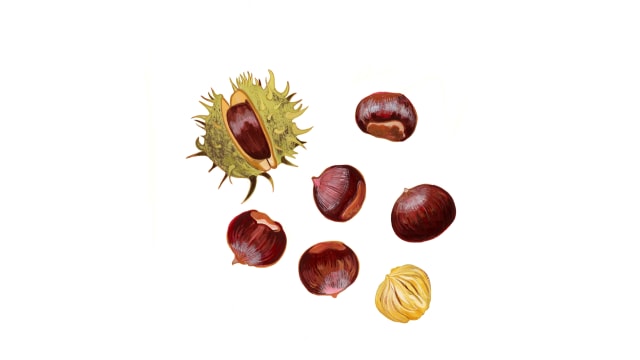Sugar and Lifestyle Diseases

Sugar, that saccharine tempter, can lay a sweet trap! It’s everywhere, hiding in plain sight, seducing our taste buds at every meal or snack.
“The taste of sweet is a complex phenomenon,” says Damayanti Datta, a journalist and the author of Sugar: The Silent Killer. “The body needs sugar to keep ticking. Sugar coats every living cell in our body and plays a key role in every biological process. The brain can’t function without sugar and rewards the body with pleasure hormones for consuming more and more of it.”
But here’s the bitter truth: Excess sugar can be the silent cause for many lifestyle diseases. From diabetes to obesity, the sweet culprit has a hand in it all. “Sugar can be somewhat misleading because the main sugar molecule in our blood is actually glucose, which is naturally found in both sweets and savory foods, as well as milk, vegetables, and carbohydrates,” explains Nadia Mahmud, a registered dietitian nutritionist at Roundglass Living.
Simple carbohydrates found in refined or ultra-processed foods are high in the type of glucose that healthcare professionals warn about. Also called “free sugars” or “added sugars,” these sugars are found in processed foods, like candies, cakes, desserts, biscuits, breakfast cereals, carbonated drinks, and commercial sweet teas and fruit juices (to name a few). Sugar in whole foods such as honey, jaggery, maple syrup, agave, and foods such unsweetened fruit juices is also classified as free sugar or refined sugar because of how it reacts in the body.
For a 2,000-calorie diet, no more than 200 calories should come from added sugars, according to the USDA’s Dietary Guidelines for Americans, 2020–2025.
Sweet Menace
Sugar, especially the refined kind, has a knack for sending our blood sugar levels on a spiral, which has consequences for our health. High blood sugar, or hyperglycemia, means elevated levels of glucose in the bloodstream, primarily because the body is not producing sufficient insulin, the hormone necessary for maintaining normal blood sugar levels. This often leads to a cascading effect on our bodies that leads to various lifestyle diseases. Emily Weeks, a registered dietitian nutritionist and the author of The Everything Easy Anti-Inflammatory Cookbook, writes, “High blood sugar is damaging to the body, and it can cause inflammation, heart disease, and kidney disease.”
When you eat a sugary treat or processed foods high in refined carbohydrates, your brain responds with a surge of dopamine—the feel-good neurotransmitter. It’s a temporary high because what follows is a craving for more sugar to duplicate that same sensation. And thus begins the cycle that can lead to addiction, weight gain, and eventually lifestyle diseases. A modern diet that’s high in sugar and sodium and accompanied by a sedentary lifestyle and poor habits (like smoking, alcohol, and lack of exercise and stress management practices) can lead to lifestyle diseases, like diabetes, high blood pressure, obesity, cardiovascular issues, and other chronic comorbidities.
Diabesity
When there are no underlying health causes, diabetes and obesity are often a result of a sedentary lifestyle and a diet high in processed foods. Healthcare professionals now see a rise in diabesity, a combination of type 2 diabetes and obesity, with alarming impact on populations across many countries.
Obesity, which is often a result of a poor diet high in processed foods and excessive sugar consumption, can throw blood sugar levels out of whack, paving the way for insulin resistance and type 2 diabetes. Those extra calories from sugar can tip the scales toward obesity, a major player on the list of lifestyle diseases.
Keep Blood Sugar at Bay
The cardinal rules of health include exercise, stress management, good sleep habits, and a healthy diet, which is crucial to balance your blood sugar levels and keep those lifestyle diseases at bay. Here are diet and lifestyle tips that can help in the fight against blood sugar imbalance and related lifestyle diseases.
Protein and fiber. When you’re about to indulge in a carb-loaded feast, start with protein- and fiber-rich foods. It could be a salad or a small serving of lean protein, as these foods help slow down blood sugar spikes and give your body time to adjust to the incoming glucose more gradually. Pile your plate with fiber-rich foods, like fruits, vegetables, and whole grains. Fiber slows the absorption of sugar, preventing sudden spikes in blood sugar levels that would put a toll on insulin release. Fiber is the first line of defense that your body needs to prevent insulin resistance. Whole foods manage insulin by providing fiber, healthy fats, and slow-digesting carbohydrates that prevent rapid blood sugar spikes.
Glycemic index. When it comes to choosing foods, knowledge of the glycemic index (GI) is of great help. Low-GI foods release glucose slowly, helping maintain stable blood sugar levels. Choose legumes (beans, chickpeas, and lentils), whole grains (oat, barley, and ragi, also known as finger millet), non-starchy vegetables (lettuce, broccoli, tomato, onion, cabbage, and rhubarb), and fruits like raspberry, strawberry, grapefruit, and pomegranate, among others. On the flip side, high-GI foods, like sugary snacks and refined grains, can cause rapid spikes in blood sugar, leading to insulin resistance and other metabolic issues.
Post-meal walks. Eating is not just about satisfying your taste buds; it’s also a call to action for your body. A short walk or some light movement after a meal can significantly impact your blood sugar levels. It helps your body use glucose more efficiently and keeps those spikes in check. Make post-meal strolls a habit—your blood sugar will thank you. And even if you don’t have time for a walk, doing active chores around the house, like unloading the dishwasher or cleaning, can help lower blood sugar post-meal.
Know Your Numbers
“It’s important to work with your healthcare provider to monitor your blood sugar over time, as we tend to naturally become more insulin resistant with age,” says Mahmud. “The normal range for hemoglobin A1C, which measures your insulin sensitivity over the last three months, is below 5.7%. If your levels are above or slightly close to 5.7%, I would try to focus on strategies to help lower your blood sugar levels,” like the tips mentioned here. She also recommends using a continuous glucose monitor (CGM) to track trends in your blood sugar levels and help guide you on how to best manage your spikes.
Let’s learn to dismantle sugar and lifestyle diseases. Get control of your health with the right information and lifestyle changes. Say yes to a life of balanced blood sugar—and wellbeing.
Key Takeaways
- Manage sugar intake for better health.
- Excess sugar spikes blood sugar.
- Tackle diabesity with dietary changes.





